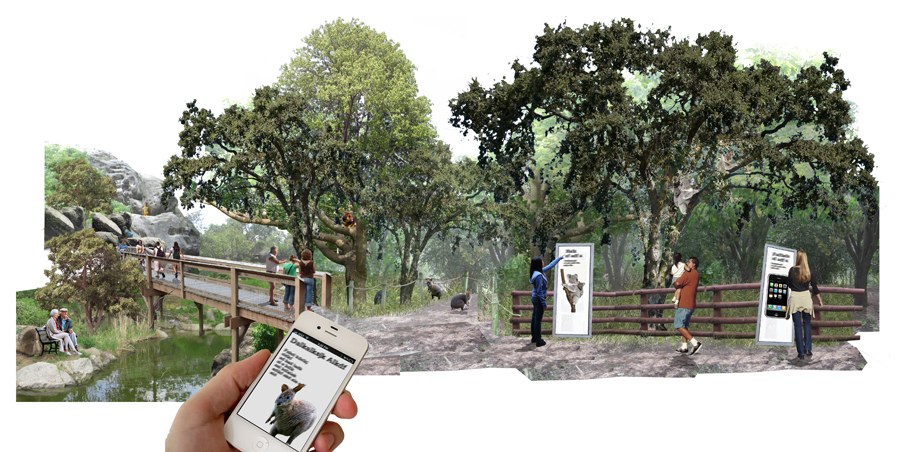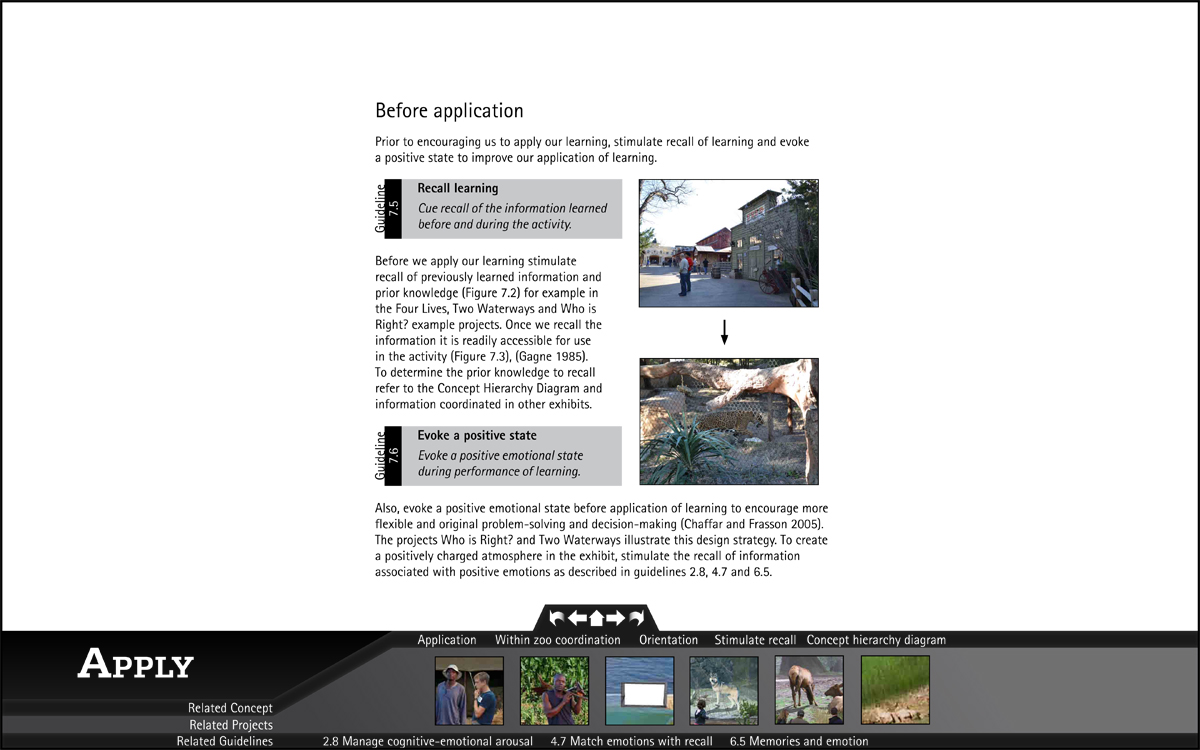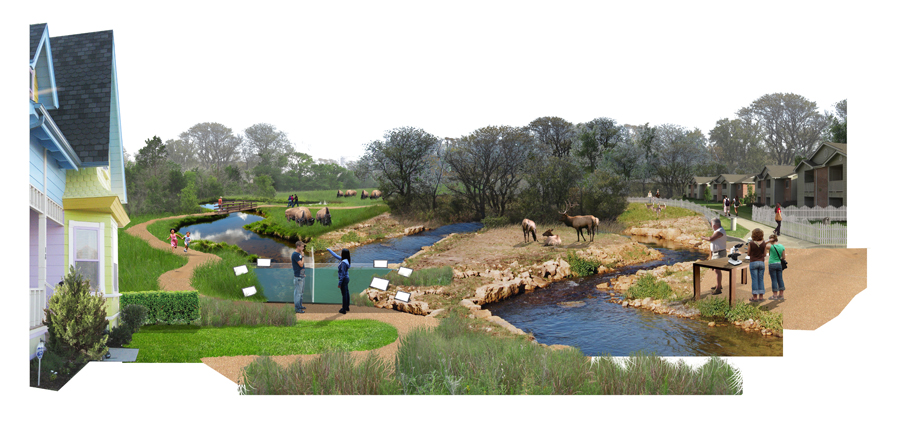By Russell Ploutz Example projects
To understand how to apply the nine principles and fifty-three guidelines, I designed seven example projects. The projects illustrate how the design guidelines coalesce to create a cognitive experience and shape the exhibit form. For each of the example projects, illustrations and narratives explain how the exhibit engages and facilitates visitor’s learning processes following the design guidelines. Projects like Who is Right?, Help the Otters, and Two Waterways describe exhibit concepts and possible design strategies for using the guidelines such as comparison, decision-making and action-taking.
One example project, Four Lives, centers on the activity of role playing and decision-making. First, visitors choose to be a farmer, poacher or ranger and throughout the exhibit experience situations and information specific to their character. In some situations they make decisions applying their prior knowledge, information presented in the exhibit and their emotions by reacting to the situation affecting their character. The exhibit facilitates the decision-making process by stimulating recall with design elements, guiding understanding with trained actors and engaging advanced cognitive processes. To enable their application of knowledge, the visitor circulation is a network of pathways where at each junction visitors choose a path linked to their decision. The chosen path leads visitors to a new situation embodying the consequence of their decision, providing feedback on their application of learning.
Design Manual
I compiled the example projects, guidelines and background information into an interactive digital document. The interactivity reflects the complexity and interconnected process of learning by providing hyperlinks to related information using a navigation bar. The bar helps the reader navigate the complexity and make connections between related concepts, guidelines and example projects.
Overall, the design manual presents a vision of increased visitor engagement and greater influence of exhibits on learning. It demonstrates how the program, exhibit organization and spatial characteristics can affect visitor’s learning processes. Additionally, the document raises questions about the design approach and extra design processes needed in the design of zoo exhibits for learning. Ultimately, the guidelines have the potential to provide new visitor experiences and design strategies which engage learning processes, helping to achieve zoo’s goal of conservation.
If you are interested in the other example projects, learning more about cognitive processes, and how exhibits can facilitate learning feel free to contact me at russell.ploutz@gmail.com.

























